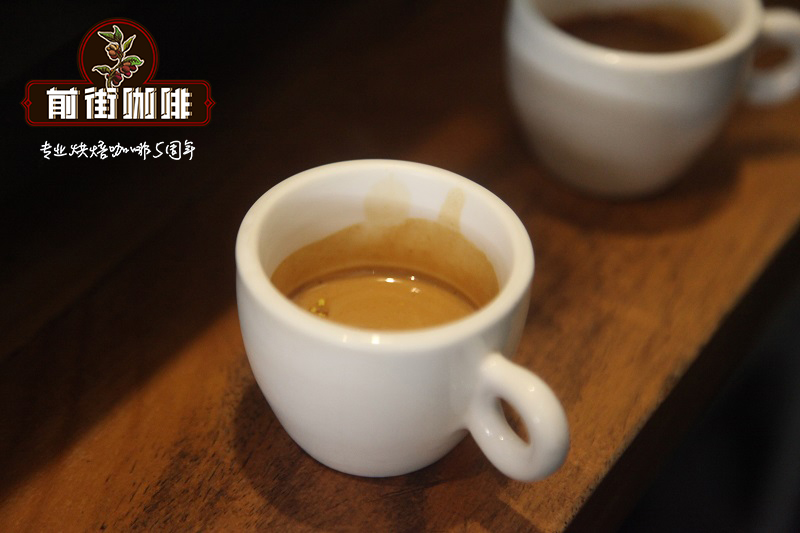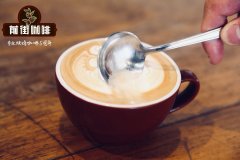The difference between cappuccino, latte and Flat White

Professional coffee knowledge exchange more coffee bean information please follow the coffee workshop (Wechat official account cafe_style)
When traveling, do you also like to walk around the streets of major cities, look for a specialty cafe in hidden laneway, and sit down and savor the afternoon? Looking at a dazzling array of coffee options: macchiato Macchiato# mocha Mocha# latte Latte# cappuccino Cappuccino. Do you have the same confusion as I did? How to choose a cup of coffee that suits your taste and style? Coffee menu Lesson One, let's talk about a few common coffee options.
1. Latte Latte
The word Latte comes from Italy, which means milk, and in France, it is called lait, which also means milk. Latte was invented by Fanz George Kolschitsky, a native of Vienna, Italy. As the name implies, Coffee Latte is milk and coffee. But later people were lazy to call this drink a latte Latte for short.
The composition of the latte is 1. One portion of semantic concentrate (one shot: 30ml of espresso) 2. Hot milk whipped (usually with one centimeter of foam foam on the top of the coffee). There is a unique way of drinking lattes in Melbourne. Some people sprinkle a thin layer of brown sugar powder on the top foam of the latte, then scoop it up with a small spoon and taste it! In addition, in Australia, it is usually filled with a transparent latte cup (about 200ml-300ml), so gluttons can clearly tell whether this is a good latte or not. In the coffee city of Melbourne, drinking Gaga has always been a very fastidious national sport.
2. Cappuccino Cappuccino
Cappuccino Cappuccino, also from Italy, is a very layered cup of coffee. The word was originally the name of a church in Italy (Franciscan Capuchin Friars), and Cappucio means headscarf in Italy. This cup of coffee was invented by Italian Abchiha, who also invented the steam pressure concentrator (espresso machine). Cappucinno gets its name because of the color of the coffee and the thick foam on it, like a Franciscan monk in a dark brown coat and a headscarf. Cappuccino Yomo was invented in 1948, but it was not until a report in San Francisco after 1990 that it became world-famous.
This cup is full of layers of coffee, the first taste of thick milk foam, accompanied by the aroma of chocolate powder dancing on the tip of the tongue. The next sip is the symmetrical mixture of espresso and milk, which makes people feel the bitter and full-bodied aroma on the tip of the tongue after roasting and extracting coffee beans. The composition of cappuccino: 1. One portion of semantic concentrate (one shot: 30ml of espresso) 2. Hot milk that has been foamed (the top layer has a foam of 1 beat 3, which is a little more than a latte). Finally, sprinkle with chocolate powder. Cappuccino is usually filled with Ceramic cup, a ceramic cup with a handle, and there is only about 150ml-180ml in a cup, so the coffee is more concentrated and tastes stronger than a latte!
3. Flat White (Australian specialty coffee)
Australian Milk Coffee Flat White comes from Australia's exclusive coffee, from Sydney, is a cappuccino variety. His concept is the same as that of cappuccino, except that it changes on the top foam. In principle, Flat White is a cappuccino without milk foam, and gluttons who don't like the taste of milk foam usually order such a drink. The components of Flat White are as follows: 1. One portion of semantic concentrate (one shot: 30ml of espresso) 2. Steamed hot milk (there is hardly any foam barely no foam on top on the top). Flat White is also filled with Ceramic cup, a ceramic cup with a handle, and a cup contains about 150ml-180ml.
Important Notice :
前街咖啡 FrontStreet Coffee has moved to new addredd:
FrontStreet Coffee Address: 315,Donghua East Road,GuangZhou
Tel:020 38364473
- Prev

Bottled coffee beverage brands learn where coffee drinks are good the difference between coffee drinks and coffee
Professional coffee knowledge exchange more coffee bean information please follow the coffee workshop (Wechat official account cafe_style) coffee beverage origin and development: the source of coffee can not be examined. One of the many legends refers to the plateau region of Cafa province in southwestern Ethiopia, where coffee originated. It is said that more than a thousand years ago, a shepherd became very excited when he found that the sheep had eaten a plant.
- Next

The recipe of fancy coffee cappuccino tutorial on how to make cappuccino coffee
Professional coffee knowledge exchange more coffee bean information please follow the coffee workshop (Wechat official account cafe_style) fancy coffee * cappuccino Cappuccino materials: full-fat fresh milk, cinnamon powder. Practice: A. Boil a portion of espresso (semantic concentrate). B . Add hot fresh milk and fresh milk foam, the ratio is 1:1:1, the finished weight is 140cc to
Related
- Beginners will see the "Coffee pull flower" guide!
- What is the difference between ice blog purified milk and ordinary milk coffee?
- Why is the Philippines the largest producer of crops in Liberia?
- For coffee extraction, should the fine powder be retained?
- How does extracted espresso fill pressed powder? How much strength does it take to press the powder?
- How to make jasmine cold extract coffee? Is the jasmine + latte good?
- Will this little toy really make the coffee taste better? How does Lily Drip affect coffee extraction?
- Will the action of slapping the filter cup also affect coffee extraction?
- What's the difference between powder-to-water ratio and powder-to-liquid ratio?
- What is the Ethiopian local species? What does it have to do with Heirloom native species?

